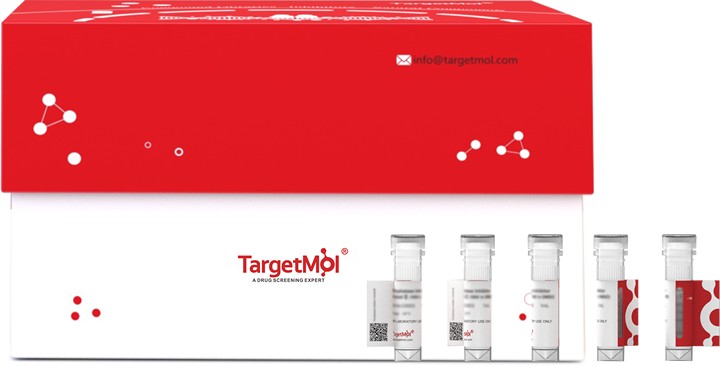- 全部删除
 您的购物车当前为空
您的购物车当前为空
EEF1B2 Protein, Human, Recombinant (His)
EF1B, also known as EEF1B2, is a translation elongation factor. It belongs to the EF-1-beta/EF-1-delta family. Elongation factors are a set of proteins that are used in protein synthesis in the cell. In the ribosome, they facilitate translational elongation, from the formation of the first peptide bond to the formation of the last one. EF1B is more complex in eukaryotes than in bacteria, and consists of three subunits: EF1B-alpha, EF1B-gamma and EF1B-beta. EF1B contains 1 GST C-terminal domain. It is involved in the transfer of aminoacylated tRNAs to the ribosome. EF1B is required to regenerate EF1A from its inactive form (EF1A-GDP) to its active form (EF1A-GTP). EF1A is then ready to interact with a new aminoacyl-tRNA to begin the cycle again.

EEF1B2 Protein, Human, Recombinant (His)
| 规格 | 价格 | 库存 | 数量 |
|---|---|---|---|
| 100 μg | ¥ 4,460 | 5日内发货 |
产品信息
| 生物活性 | Activity testing is in progress. It is theoretically active, but we cannot guarantee it. If you require protein activity, we recommend choosing the eukaryotic expression version first. |
| 产品描述 | EF1B, also known as EEF1B2, is a translation elongation factor. It belongs to the EF-1-beta/EF-1-delta family. Elongation factors are a set of proteins that are used in protein synthesis in the cell. In the ribosome, they facilitate translational elongation, from the formation of the first peptide bond to the formation of the last one. EF1B is more complex in eukaryotes than in bacteria, and consists of three subunits: EF1B-alpha, EF1B-gamma and EF1B-beta. EF1B contains 1 GST C-terminal domain. It is involved in the transfer of aminoacylated tRNAs to the ribosome. EF1B is required to regenerate EF1A from its inactive form (EF1A-GDP) to its active form (EF1A-GTP). EF1A is then ready to interact with a new aminoacyl-tRNA to begin the cycle again. |
| 种属 | Human |
| 表达系统 | E. coli |
| 标签 | N-His |
| 蛋白编号 | P24534 |
| 别名 | eukaryotic translation elongation factor 1 β 2,eukaryotic translation elongation factor 1 beta 2,EF1B,EEF1B1,EEF1B |
| 蛋白构建 | A DNA sequence encoding the human EEF1B2 (P24534)(Met1-Ile225) was expressed with a polyhistidine tag at the N-terminus. Predicted N terminal: His |
| 蛋白纯度 | > 90 % as determined by SDS-PAGE |
| 分子量 | 26.6 kDa (predicted); 30 kDa (reducing conditions) |
| 内毒素 | Please contact us for more information. |
| 缓冲液 | Lyophilized from a solution filtered through a 0.22 μm filter, containing 50 mM Tris, 100 mM NaCl, 10% Glycerol, 1 mM DTT, pH 8.0.Typically, a mixture containing 5% to 8% trehalose, mannitol, and 0.01% Tween 80 is incorporated as a protective agent before lyophilization. |
| 复溶方法 | A Certificate of Analysis (CoA) containing reconstitution instructions is included with the products. Please refer to the CoA for detailed information. |
| 存储 | It is recommended to store recombinant proteins at -20°C to -80°C for future use. Lyophilized powders can be stably stored for over 12 months, while liquid products can be stored for 6-12 months at -80°C. For reconstituted protein solutions, the solution can be stored at -20°C to -80°C for at least 3 months. Please avoid multiple freeze-thaw cycles and store products in aliquots. |
| 运输方式 | In general, Lyophilized powders are shipping with blue ice. |
| 研究背景 | EF1B, also known as EEF1B2, is a translation elongation factor. It belongs to the EF-1-beta/EF-1-delta family. Elongation factors are a set of proteins that are used in protein synthesis in the cell. In the ribosome, they facilitate translational elongation, from the formation of the first peptide bond to the formation of the last one. EF1B is more complex in eukaryotes than in bacteria, and consists of three subunits: EF1B-alpha, EF1B-gamma and EF1B-beta. EF1B contains 1 GST C-terminal domain. It is involved in the transfer of aminoacylated tRNAs to the ribosome. EF1B is required to regenerate EF1A from its inactive form (EF1A-GDP) to its active form (EF1A-GTP). EF1A is then ready to interact with a new aminoacyl-tRNA to begin the cycle again. |




